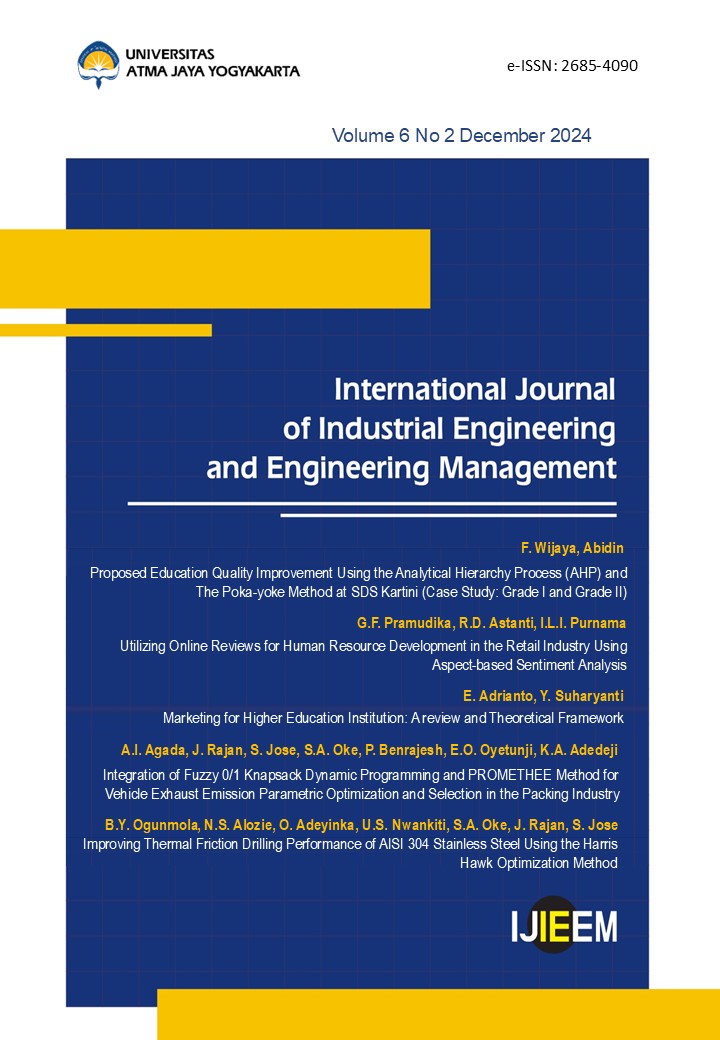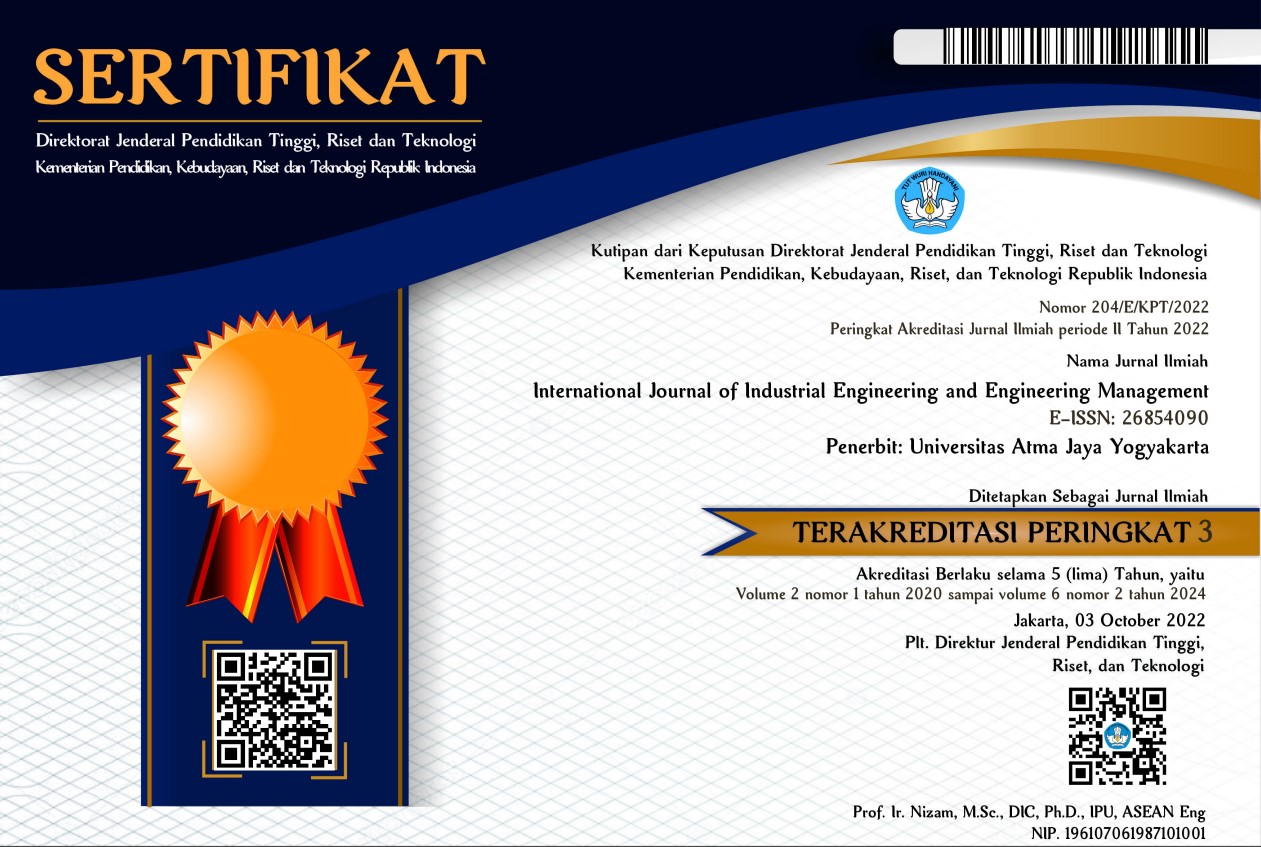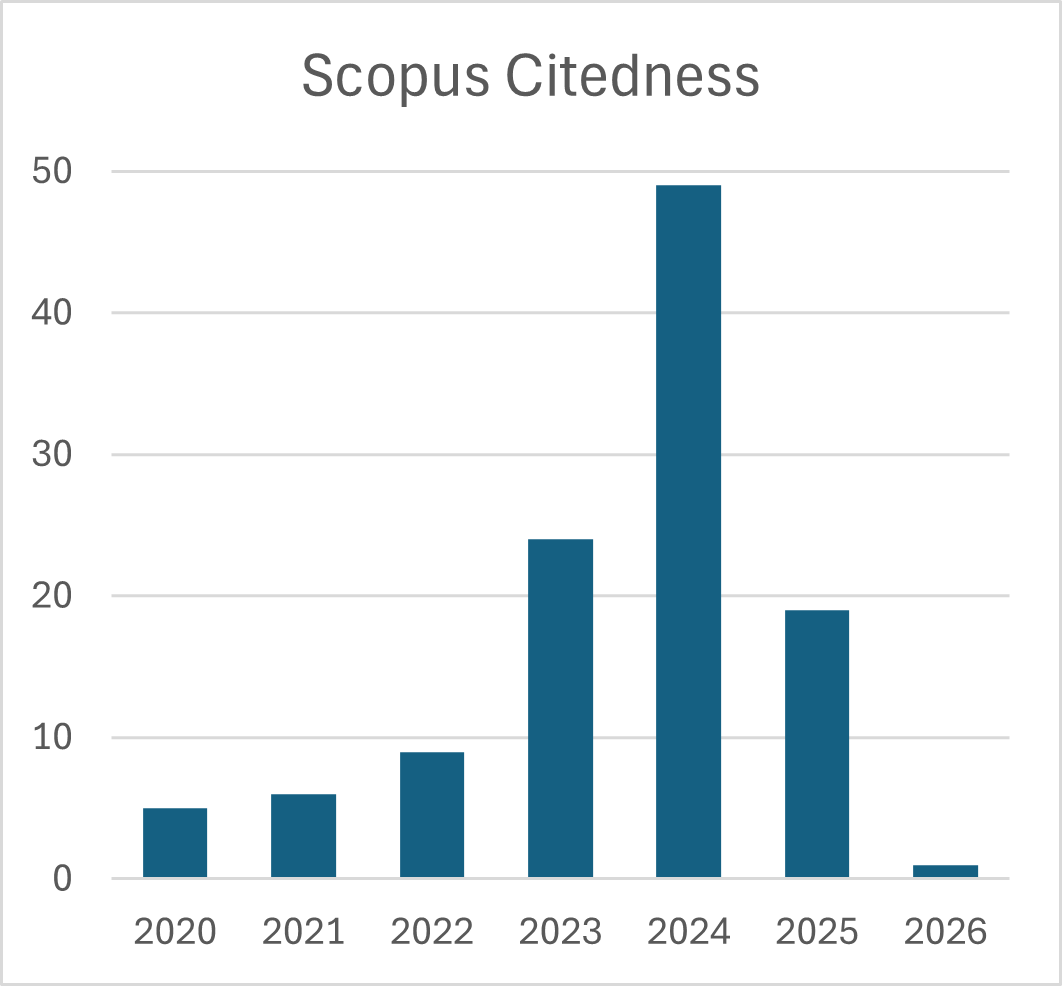Integration of Fuzzy 0/1 Knapsack Dynamic Programming and PROMETHEE Method for Vehicle Exhaust Emission Parametric Optimization and Selection in the Packing Industry
DOI:
https://doi.org/10.24002/ijieem.v6i2.7689Keywords:
decision-making, exhaust emission, logistics, optimization ordering, packing industryAbstract
Packaging industries fabricate and transport products in wrapped, sealed, and cushioned containers and boxes on roads, often through fossil-fuelled vehicles that emit carbons. Thus, decarbonization and net zero emission drive are compelling for these vehicles. This paper proposes a robust green logistics interaction model for monitoring and reducing exhaust pipe emissions in an uncertain environment. It uses a hybrid method known as fuzzy-0/1-KDP-PROMETHEE (Fuzzy-0/1 Knapsack dynamic programming-Preference Ranking Organization Method for Enrichment Evaluation) approach to concurrently reduce uncertainty, optimize the capacity of the knapsack and establish the preferred option among the parameters of green logistic. Both PROMETHEE I and II were introduced and tested using logistics data from an Indian environment based on secondary data. The method works by first reducing the effect of uncertainty on the model outcomes. This was achieved by establishing the output space as the fuzzy state, creating fuzzy rules, and mapping degrees to rules. Then, the degrees are used to maximize, ensuring that the weighted sum is not greater than the capacity of the Knapsack. The outcome is then regarded as the element of the green logistics exhaust emission process. The results obtained from the analysis, using the replacement of fuzzy expert (triangular) with fuzzy extent (trapezoidal), fuzzy geometric mean (triangular), and fuzzy geometric mean (trapezoidal) reveal that the fuzzy-0/1-KDP-PROMETHEE method adequately represents the score obtained using the data set from the exhaust emissions.
References
Acharyya, S., Changdar, C., & Nadi U. (2022). A special 0-1 knapsack problem for a small vegetable retailing system under fuzziness: a swarm optimization-based approach. Neural Computing and Applications, 34, 9175-9190.
Agada, A.I., Rajan, J., Jose, S., Oke, S.A., Benrajesh, P., Oyetunji, E.O., Adedeji, W.O., & Adedeji, K.A. (2024). Vehicle exhausts emission process parametric optimization and selection using the fuzzy-knapsack dynamic programming-EDAS method for logistics application. The Egyptian International Journal of Engineering Sciences and Technology, 46, 105–123.
Allam, S., & El said, A.M. (2020). Parametric study on vehicle fuel economy and optimizations criteria of the pleated air filter designs to improve the performance of an I.C. diesel engine. Experimental and Purification Technology, 241, Article 116680.
Ballinas, E., & Montiel, O. (2023). Hybrid quantum genetic algorithm with adaptive rotation angle for 0-1 knapsack problem in the IBM Qiskit Simulator. Soft Computing, 27, 13321-13346.
Bakrili, B.B., Gencer, C., & Aydogan, E.K. (2014). A combined approach for fuzzy multi-objective multiple knapsack problems for defence project selection. Journal of the Operational Research Society, 65(7), 1001-1016.
Benrajesh, P., & Rajan, A. (2019). Optimizing the exhaust emission from logistics and packing industries, by means of green logistics. Journal of Physics Conference Series, 1355(1), Article 012019.
Bor, M., Idzior, M., Karpiuk. W., & Smoked, R. (2018). The impact of changing engines operational parameter on its emission. IOP Conference series: Materials Science and Engineering, 421, Article 042004.
Guor, S., Zhang, Y., & Cai, G.Q. (2020). Study on exhaust emission test of diesel–vehicles based on PEMS. Procedia Computer Science, 166, 428-433.
Govindan, K., Kadziński, M., & Sivakumar, R. (2017). Application of a novel PROMETHEE-based method for construction of a group compromise ranking to prioritization of green suppliers in food supply chain. Omega, 71, 129-145.
Halman, N., Kovalyov, M.Y., & Quilliot, A. (2023). Max-max, max-min, min-max, and min-min knapsack problems with a parametric constraint 40R-Quartelry. Journal of Operations Research, 21, 235-246.
Kasperski, A., & Kulej, M. (2007). The 0-1 knapsack problem with fuzzy data. Fuzzy Optimization and Decision Making, 6, 163-172.
Lin, G., Zhu, W., & Ali, M.M. (2011). An exact algorithm for the 0-1 linear knapsack problem with a single continuous variable. Journal of Global Optimisation, 50, 657-673.
Liu, P., & Li, Y. (2021). An improved failure mode and effect analysis method for multcriteria group decision-making in green logistics risk assessment. Reliability Engineering and System Safety, 215, Article 107826.
Mansour, I.B. (2023). An Effective hybrid auto colony optimization for the knapsack problem using multi-directional search. SN Computer Science, 4, Article 164.
Mqdziel, M. (2023). Vehicle emission models and traffic simulators: A review. Energies, 16(9), Article 3941.
Niksirat, M., & Nasseri, H.S. (2022). Knapsack problem in fuzzy nature: Different models based on credibility ranking method. Yugoslav Journal of Operations Research, 32(2), 203-218.
Nip, K., Wang, Z., & Wang, Z. (2017). Knapsack with variable weights satisfying linear constraints. Journal of Global Optimisation, 69, 713-725.
Pan, X., & Zhang, T. (2018). Comparison and analysis of algorithms for the 0/1 knapsack problem. IOP Conference Series: Journal of Physics: Conference Series 1069, Article 012024.
Plotkin, A.V. (2022). Fast algorithm for the quadratic knapsack problem, Vestnik St. Petersbrough University of Mathematics, Vol. 55, pp. 57-63.
Pramanik, A., Changdar, C., Khan, A., Chatterjee, S., Pal, R.K., & Sahana, S.K. (2022). A 0-1 knapsack problem-based approach for solving open-pit mining problem with type-2 fuzzy parameters. Innovations in Systems and Software Engineering.
Raj, P., Bharadwaj, N.K., & Ranjana. (2023). Fuzzy solution model for multi-objective multi-resource knapsack problem. International Journal of Mathematics Trends and Technology, 69(1), 62-66.
Salem, M.B., Taktak, R., Mahjoub, A. R., & Ben-Abdallah, H. (2018). Optimisation algorithms for the disjunctively constrained knapsack problem. Methodologies and Application, 22, 2025-2043.
Sarkan, B., Loman, M., Synak, F., Skrucany, T., & Hanzi, J. (2022). Emission production by exhaust gases of a road vehicle starting depending on a road gradient, sensors (Based), Vol. 22, No.24, Article 9896.
Tong, L.Z., Wang, J., & Pu, Z. (2022). Sustainable supplier selection for SMEs based on an extended PROMETHEE Ⅱ approach. Journal of Cleaner Production, 330, Article 129830.
Traneva, V., Petrov, P., & Tranev, S. (2023). Intuitionistic fuzzy Knapsack problems through the index matrices prism. Numerical Methods and Applications, 314-326.
Wei, Q., Zhou, C., Liu, Q., Zhou, W., & Huang, J. (2023). A barrier evaluation framework for forest carbon sink project implementation in China using an integrated BWM-IT2F-PROMETHEE II method. Expert Systems with Applications, 230, Article 120612.
Xue, H., Jiang, S., & Liang, B. (2013). A study on the model of traffic flow and vehicle exhaust emission. Mathematical Problems in Engineering, 2013, Article 736285.
Yildizdan, G., & Bas, E. (2023). A novel binary artificial jellyfish search algorithm for solving 0-1 knapsack problems. Neural Processing Letters, 55, 8605-8671.
Zhao, H., He, R., & Jia, X. (2019). Estimation and analyzed of vehicle exhaust emission at signalized intersection using a car-following model. Sustainability, 11(14), Article 3992.
Downloads
Published
How to Cite
Issue
Section
License
Copyright (c) 2024 Alexander Iwodi Agada, John Rajan, Swaminathan Jose, Sunday Ayoola Oke, Pandiaraj Benrajesh, Elkanah Olaosebikan Oyetunji, Kasali Aderinmoye Adedeji

This work is licensed under a Creative Commons Attribution 4.0 International License.








